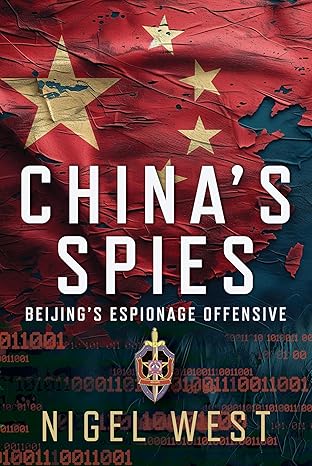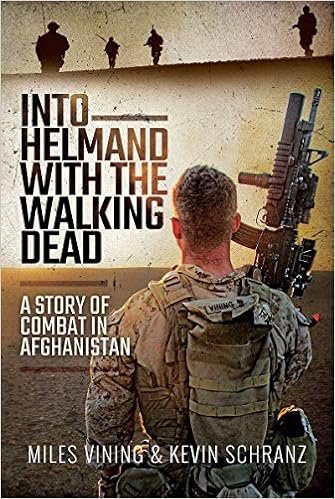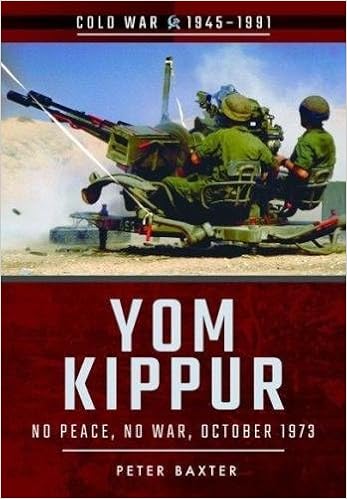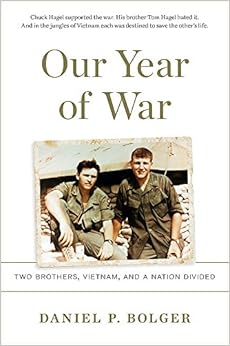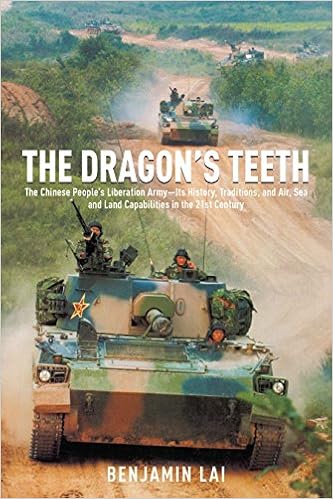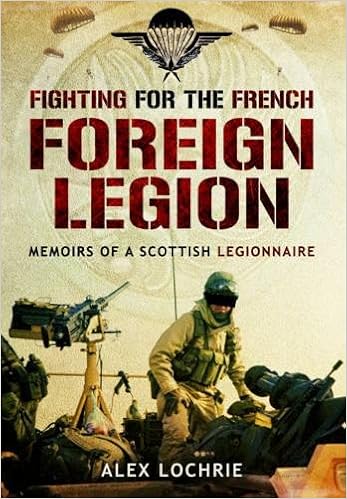"Hit 'Em Where They Ain"t", General of the Army Douglas MacArthur and Baseball
By Bob Seals
|
“It was the practical application of this system of warfare—to avoid the frontal attack with its terrible loss of life; to by-pass Japanese strongpoints…isolate their armies and starve them…to, as Willie Keeler used to say, ‘hit ‘em where they ain’t’---that from this time forward guided my movements and operations.”[1] |
|
|
Introduction
The roar of the crowd, the crack of a wooden bat on a ball, the deep emerald green grass of the field, our national pastime of baseball has had a profound effect upon countless American youths over the years. One such youth so influenced by the sport was an Army cadet who played, advocated and remained a fan of baseball his entire life, General of the Army Douglas MacArthur. As a young man in the latter years of the nineteenth, and early years of the twentieth century, MacArthur played varsity level baseball in high school and at the United States Military Academy at West Point. However, most are relatively unfamiliar with how the sport significantly influenced him, and ultimately his thinking, in regards to warfare.
General MacArthur today is remembered as a great fan of Army football, perhaps due to his gridiron enthusiasm and long friendship with legendary West Point football coach Earl "Red" Blaik, but baseball was the sport he played, coached, advocated and used, to an extent, in his thinking. Baseball was, to a degree, a paradigm for his thoughts and the operational concepts that helped guide his approach to warfare, to include his most notable campaigns of World War II. These campaigns were described by MacArthur as “leap-frogging,” or three dimensional “triphibious” land, sea and air operations used to support “the classic strategy of envelopment,” on the long path back to the Philippines.[2]
During the entirety of his “…fifty two years of military service,” General MacArthur remained a deeply committed fan of the sport, and the positive effects of athletics in general, upon Army leaders and soldiers.[3] Convinced of the value of sporting activity, especially after his combat experience in France during the First World War, General MacArthur subsequently used baseball as a creative intellectual framework to help him overcome crippling shortages of resources during his planned return to the Philippines and later during the early chaos of the Korean conflict. In regards, after the fall of the Philippines MacArthur did indeed, “hit em where they ain’t,” a simple, ungrammatical, but masterful summation of how he thought of the MacArthur Way of War.
This paper is an examination of the influence that baseball had upon Douglas MacArthur, the athlete and leader, first as a young man and junior officer, later as Superintendent of the U.S. Military Academy at West Point, then finally as the Commander of the Southwest Pacific in the Second World War. We shall see that MacArthur, ironically not a product of the growing doctrinal framework and school system of the Army from before World War II, used the sport as a methodology to help guide his thinking, and overcome disadvantages. Additionally, this paper should correct, or help at least clarify, the rather muddled and incorrect historical record of his modest but significant baseball career, repeated again and again, that the General helped to unfortunately confuse with his 1964 autobiography, Reminiscences.[4] MacArthur author Richard B. Frank has said that MacArthur is “a great source for color,” but for facts look elsewhere; this paper uses extensive primary sources to determine the truth about an interesting aspect of the General’s life so often gotten wrong.[5]
Beginnings
“I had always loved athletics and the spirit of competition moved me to participate in as many sports as possible. I became the quarterback on the eleven, the shortstop on the nine, the tennis champion of the campus.”[6]
Baseball, by the latter half of the nineteenth century, was firmly established in American society, and the U.S. Army. Played since well before the Civil War, games were an important part of helping to “…[break] the monotonous rhythm of garrison life,” according to noted Army historian Dr. Edward M. Coffman.[7] Young children of soldiers such as Douglas MacArthur watched soldiers play the game, sometimes called "town ball," on various dusty western posts. MacArthur, born in Little Rock, Arkansas in 1880, lived as a child in a succession of small Army posts, such as Forts Wingate and Selden in New Mexico, and Fort Leavenworth in Kansas. Young Douglas, as recalled in later years, thoroughly enjoyed growing up on the western frontier with Geronimo scares, colorful retreat ceremonies, riding, shooting, and leading a “Little Rascals” like gang called the “Apaches” against the rival “Creek” youth gang, all keeping a young boy enthralled and active.[8]
His father, Arthur MacArthur, a distinguished Civil War Union Army veteran, was posted to Fort Sam Houston, Texas as a Major of Infantry in 1893. There, Douglas, by now a lanky teenager, was enrolled in the newly opened West Texas Military Academy, WTMA, on nearby Grayson Street in San Antonio, settling down to work and beginning his career in earnest.[9] A bright student academically, MacArthur was also Sergeant of the drill team and won recognition for public speaking. His first two years of high school were spent, not with baseball, but rather on the tennis team, becoming the school’s number one ranked player and winning a city championship.[10]
Later, as a high school upper classman, MacArthur was a successful baseball shortstop for West Texas. At the plate, "MacArthur's forte was bunting," a valuable baseball skill during the so called dead ball era.[11] He was also manager of the baseball team during his last two years at West Texas Military Academy, with school records listing his teams as suffering only one defeat of thirteen games total during 1895-97.[12] West Texas was instrumental in MacArthur's development process, helping him establish a solid academic and athletic foundation that served him well for many years to come. "This is where I started," he fondly recalled during a brief visit back to West Texas Military Academy many decades later.[13]
Graduating from WTMA in 1897, academically first in his class, but not as his class valedictorian, as so often misreported, MacArthur moved with his parents to Milwaukee, Wisconsin, his father’s home town, to prepare and compete for an appointment to the United States Military Academy at West Point.[14] Winning an appointment to the Military Academy class of 1903, MacArthur reported to West Point in June of 1899 beginning his freshman, or plebe year.
West Point and Baseball
“Strenuous life begins for the novitiate at West Point at the moment that he alights at the railway station on the Post".[15]
The Academy at the turn of the century was a mere fraction of its present modern day size, with only 74 officer instructors and a total of 429 cadets in four classes organized into a single battalion of six companies.[16] Life at USMA was described by cadets as "...stern, harsh and almost prison-like," but organized sports such as baseball proved to be a much needed tonic from the daily grind of classes and drill.[17] Accounts of cadets playing baseball go back to 1820, but it was not until 1890 that Army truly organized and began to play other collegiate teams.[18] This small school on the Hudson, however; did have a singular athletic visionary who helped prepare cadets, such as MacArthur, physically, at a time well before the advent of personal fitness or intramurals. Herman Koehler was the USMA master of the sword from 1885 to 1923.
A former national gymnastics champion described as a “force of nature,” Koehler subjected cadets, or at least plebes until 1905, to a punishing daily regimen of exercises and mass physical training that achieved results.[19] Plebes of MacArthur’s class of 1903, on average, added an average of almost four pull-ups, three and half dips and increased lung capacity with Koehler’s rigorous daily physical training from the months of October to May.[20] No individual figures for MacArthur as a plebe exist, but undoubtedly he benefited from such mandatory daily workouts. MacArthur’s cadet roommates later recalled his driving ambition to be number one in his class and of his additional time spent in the gym, daily, especially during winter months, not an average occurrence around the turn of the century.[21]
Baseball was not part of MacArthur's plebe year, but his first year was far from uneventful. “The hazing in those days was very rough,” with upper classman of the day giving a "…warm reception for the sons of well-known men," as MacArthur was hazed until the point of exhaustion during initial cadet training or "Beast Barracks" at West Point.[22] Baseball, in fact, was not even Cadet MacArthur’s first choice of sports at the Academy. Football was the sport he most earnestly wanted to play, having played for his West Texas prep school squad as a skinny quarterback, the lightest man on the team.[23]
Reporting in to the Academy at a light 133 pounds on a 5 feet 11 inches tall frame, MacArthur was much too light for competitive college football. Football of the day could truly be deadly, with an Army cadet left tackle dying after a particularly brutal game with Harvard.[24] Army was a football powerhouse of the day, usually ranked fourth in the nation by observers behind Harvard, Yale and Princeton, so MacArthur made the best of his rather limited size and athletic resources, pursuing athletic glory and recognition at West Point via the baseball diamond.[25] Cadet Douglas MacArthur was a rather atypical baseball player, being cross dominant, that is; a left handed batter but a right handed thrower.[26] Studies have suggested that cross dominant baseball players have an advantage and tend to have higher batting averages; but this was not MacArthur’s case from Army team statistics.[27]
In 1901 as a sophomore, or yearling, his college baseball career began. MacArthur became the starting Left Fielder for the Army team, helped by the departure of Cadet Francis W. Clark, a member of the senior or “Firstie” class that graduated early that year in February, rather than June.[28] Varsity baseball at the academy was attractive to Army cadets, who were given "more privileges than before," according to star shortstop John K. Herr, with players “recognized” by upperclassmen, allowed to eat together at the Mess Hall, and enjoying traveling off post for an away game with the U.S. Naval Academy at Annapolis, Maryland.[29]
Without a doubt the highlight of MacArthur’s modest two year Army baseball career were the first two ever Army-Navy baseball games, both of which he played in as an outfielder. While not as celebrated as the service football rivalry which began in 1890, he was still justifiably proud of participating in the very first Army-Navy game on 18 May 1901, playing left field and being “razzed” by the Navy stands as the son of a prominent Army general. MacArthur retold his account of the memorable game, in his autobiography, of a hard fought Army 4-3 victory at Annapolis, with the General dramatically scoring the winning run in the contest.[30] Unfortunately, historical records, to include newspaper box scores and Army Officer Athletic Association reports, do not support his colorful account.[31]
College baseball accounts from the time are rather rudimentary, or completely nonexistent, with box scores or detailed accounts in archives or newspapers for only the most noteworthy games. Memories began to fade, and fellow team mates recalled MacArthur as a much better baseball player than the evidence indicates, particularly after the General’s increased popularity associated with the doomed defense of the Philippines in 1941-42. MacArthur now was remembered by other Army players as “Dauntless Doug,” a “…good athlete,” who was “born with a baseball…” in one of his hands, and captain of the team who scored the winning run for Army in the third inning of that first memorable 1901 Army-Navy baseball game.[32]
As indicated, the reality is much different. Army Officers Athletic Association reports for 1901 and newspaper box scores indicate a player with much more modest talent. Although a starting player for West Point, MacArthur had a batting average of .266, some 40 points below the team average, and his fielding average of .571 was the lowest recorded for the entire Army team in 1901.[33] Specifically, box scores from the first Army Navy game detail that MacArthur drew a walk in the third inning, stole second base, and then scored the game’s third go ahead run on a base hit by Army shortstop Herr, a very accomplished athlete and polo player who went on to become the last Chief of Cavalry in 1938.
Later in the game MacArthur attempted to bunt, popping up into a double play, with West Point Team Captain and second baseman Stephen Abbott scoring what proved to be the winning fourth run in the sixth inning.[34] But the legend of MacArthur winning the first Army-Navy baseball game began, and has continued unabated, to include the 1977 Universal Pictures major feature film “MacArthur,” where the General, portrayed by actor Gregory Peck, entertains Tokyo lunch visitors with the incorrect account of the game.[35]
Half a century later Abbott recalled MacArthur as a “heady ballplayer…far from brilliant, but somehow he could manage to get on first,” surely a very charitable assessment of his skills.[36] But MacArthur was more successful running the base paths, to include stealing bases, with several recorded from the five complete box scores of games he played in during his two year collegiate career.[37]
As a player, and fan, he seems to have identified with two great professional champions of that dead ball era, Wee Willie Keeler and Ty Cobb. Keeler, who played for either the Brooklyn Superbas or New York Highlander teams during the entirety of MacArthur’s cadet days, was the master of the bunt, often fouling off ten or twenty pitches before he was satisfied with a pitch he could successfully bunt.[38] When asked in 1901 if he had written a treatise on batting Keeler remarked “Keep your eye clear and hit ‘em where they ain’t; that’s all.”[39] Cobb, playing for Detroit, was the greatest of the time, feared by opponents while playing a slashing type of play designed to cause “mental anguish” upon his opponents as he attempted to out think the other team.[40] MacArthur clearly did not possess the athletic talent of a Keeler or Cobb, but he was going to be “heady,” if nothing else, in attempting to out think the enemy and emulate his baseball heroes.
In 1902 Cadet MacArthur, as a junior or “cow,” was again an Army baseball starter but was moved from left to right in the outfield. MacArthur is said to have suffered from trouble with his eyes, perhaps due to his long hours and acknowledged poor lighting in the barracks, which limited his playing time.[41] However, he again played in the now annual Army-Navy game in May and achieved some distinction in period newspaper accounts for a particularly fine defensive play in the fifth inning, helping to stop a Navy player from scoring.[42] This year Navy prevailed; to Army’s great sorrow and won this second series game played at West Point by a score of 4 to 3 on the plains.[43]
At some point MacArthur no longer was starting for Army in the 1902 season, his position at right field taken by Cadet Fulton Q.C. Gardiner. The final game of MacArthur’s collegiate baseball career, during which he did not play, was during the memorable West Point centennial celebrations on 10 June 1902, as Yale routed Army at home 15-4 with Civil War General James Longstreet in attendance.[44] During his senior, or “firstie,” year at West Point in 1903, MacArthur did not play baseball due to the time associated with being the Corps of Cadet First Captain, maintaining his number one class standing, and managing the Army football team.
Overall the Army baseball team enjoyed considered success during his two brief but eventful years on the varsity team, winning a total of 16 games, losing 8, with one tied game due to the onset of darkness.[45] Cadet Douglas MacArthur’s collegiate baseball career was over, but not his involvement, interest or advocacy of the sport.
Junior Officer Years
“The game opened lively, Lieutenant MacArthur connecting with one of Pitcher Stone’s buzz-saw curves and made first.”[46]
Graduating on the plains of West Point in June of 1903, Second Lieutenant MacArthur was commissioned and assigned in the Corps of Engineers, considered by some as an elite. He had an interesting series of assignments, some typical, others rather atypical for a junior commissioned officer in the U.S. Army. Serving first in the Philippines, then California, he served as an aide to his father on a tour of Far East, and later in Washington for President Theodore Roosevelt.[47]
Assigned to Fort Riley, Kansas with the 3rd Battalion of Engineers in 1908, MacArthur commanded Company K. While in the 3rd Engineers he also served as a battalion staff officer, and was later selected for instructor duty at Fort Leavenworth at the Army School of the Line, which in time became the Command and General Staff College.[48] During his several years in Kansas, MacArthur’s involvement with baseball continued. He managed the Company team and continued to play baseball, now at first base, for both officer and engineer teams, in addition to serving on a board that organized competitive play on post to include games against local civilian clubs from the surrounding communities.[49] We have little evidence of how well, or not so well, he played as a junior officer, but the future Chief of WWII European Services of Supply General John C.H. Lee described MacArthur out thinking opponents to include using paid semi-pro players as ringers and entertaining opponents lavishly before games in order to gain an advantage over visiting teams.[50]
The First World War
“Troops in poor physical condition are worthless.”[51]
From Kansas, reassigned to the General Staff in Washington D.C. in 1912, MacArthur’s baseball playing days effectively came to a close. Increased duties in the nation’s capital, and the necessity of financially supporting his mother after his father’s death, limited time for recreation such as baseball, but future events made him an increased advocate after his bat and ball play on the diamond ended.[52]
The United States entry into the First World War in April of 1917 was to be a watershed event for athletics in the Army, with sports such as baseball, achieving a level of unprecedented participation, all encouraged and equipped by YMCA representatives, serving as an important diversion for the troops both in the states and overseas.[53] Regular Army officers such as MacArthur, by now a field grade officer assigned to the National Guard 42nd Infantry “Rainbow” Division, saw the benefits of sports, such as baseball, for all soldiers, not just a select few athletes. Overall his wartime experiences with the Rainbow division in France, as Chief of Staff, Brigade Commander, and finally as Commanding General, firmly convinced him of the necessity of athletics and value of physical fitness for the Army. “The effect upon the army at large of an extensive system of competitive sports, controlled by competent and well-prepared officers, cannot be overestimated.”[54]
After the armistice, MacArthur imagined a future Army of Athletes, with athletics serving as a vehicle to condition and hone leaders and troops. Sports such as baseball were a catalyst for this developmental process as he was to institute the first true collegiate intramural sports program in the nation at the U.S. Military Academy.
USMA Superintendent
“If he had bunted, he wouldn’t have popped into a double play…”[55]
Returning from France in 1919, MacArthur was a general without a division, as the “Rainbow” units and troops dispersed across the nation. He seriously considered resigning from the Army in order to accept an offer as the vice-president of a New York bank rather than revert to his permanent pre-war rank of Major in the Regular Army.[56]
Fortunately for the Army, General Peyton C. March, then Army Chief of Staff, had other plans for MacArthur, reassigning him as Superintendent of the Military Academy at West Point. Informed by March that West Point was 40 years behind the times, MacArthur turned down the bank. He was now in a position as never before to champion sports such as baseball. MacArthur was determined to be an innovative Superintendent, with athletics a key component of his plans. He moved quickly to institute an aggressive program of mandatory “mass athletics,” to include baseball, in order to improve “leadership, mental and muscular co-ordination, aggressiveness, and courage…” in the future Army officers.[57]
As the “Supe”, MacArthur was an aggressive advocate of his Army baseball team, to include Monday morning strategy sessions with the head coach, former New York Giant player Hans Lobert, attending Army baseball practices and games, and traveling with the squad for the annual Army-Navy contest.[58] Once during practice he grabbed a bat and attempted to help Cadet Earl “Red” Blaik, struggling in the batting cage, master the art of hitting a curve ball, with decidedly mixed results.[59] A fan of the nearby professional team, the New York Giants, MacArthur invited the team, and Hall of Fame coach John J. McGraw, whom he admired, to the academy for an annual spring baseball game with the cadets. In 1921 he attempted to begin a rivalry with the Columbia baseball team, suspending classes for an afternoon so Army cadets could attend and host the hundreds of supporters traveling by chartered boat up the Hudson for the game.[60]
His duties as Superintendent were considerable, but MacArthur was always willing to accept an invitation from the Mayor of New York and take in an occasional Giants game at the Polo Grounds down in the city. During his short tenure at the academy MacArthur was an innovative head of this most conservative of Army institutions, allowing cadets greater privileges than ever before, such as spending money, and an occasional pass off West Point.[61] He managed; however, to incur the wrath of Army Chief of Staff John J. Pershing, who curtailed his tour of duty, ranking him 38 of 46 generals in an efficiency report writing “Should serve some years in present grade…has an exalted opinion of himself,” before shipping him off to the isolation of the Philippines in the summer of 1922.[62]
Before returning to the islands, MacArthur had his athletic, and baseball, lodestar set in stone at the entrance of the new academy gymnasium:
|
“Upon the fields of friendly strife,
Are sown the seeds that, Upon other fields, on other days, Will bear the fruits of victory.” [63] |
Pershing’s report notwithstanding, MacArthur’s career continued unabated as he was assigned to positions of increased responsibility before the Second World War, as the old Army saying goes. Corps level and Philippine Department command were followed by appointment as the Army’s thirteenth Chief of Staff in 1930, active duty retirement and ultimate selection by the Commonwealth President of the Philippines as the first ever Field Marshal of the Philippine Army in 1937.
Decades had passed since his glory days on the Army team, but MacArthur continued to use baseball in his thinking and writing, for example sending a telegram of congratulations to his old team mate Major General John K. Herr, after his selection as Chief of Cavalry in March of 1938, “That’s hitting the old ball for a home run I am delighted.”[64] MacArthur was to return to baseball in his thinking again as Imperial Japan soon turned east.
World War Two
"It has always proved the ideal method for success by inferior but faster-moving forces. The paucity of the resources at my command made me adopt this method of campaign as the only hope of accomplishing my task."[65]
The Imperial Japanese assault in the Pacific in December of 1941 encompassed the Commonwealth of the Philippines, and a recalled to active duty MacArthur soon found himself, and the U.S. Army Forces in the Far East, in the fight of their lives. Forced to adopt the defensive strategy of the Rainbow War Plan series, due to the almost complete destruction of his Army Air Corps forces and an inability by American and Filipino ground units to contain Japanese advances, MacArthur’s forces were forced to fight an operational war of static infantry and artillery until destruction and ultimate surrender in May of 1942.[66]
MacArthur, now in Australia after his dramatic PT-boat and B-17 escape through enemy lines, soon commanded Australian and American forces as the South West Pacific Commander. In New Guinea, Allied forces were fighting again in a bloody, attritional infantry and artillery operational slugfest with thousands of battle and non-battle causalities required to reduce the Japanese strongpoint at Buna. Limited resources, time and space all were working against MacArthur. A different strategy had to be employed if MacArthur was going to return to the Philippines.[67]
Baseball now helped the South West Pacific Commander formulate a new strategy, one that attempted to avoid costly positional warfare and direct assaults as in the past. Colorfully described by MacArthur in his memoirs “as Willie Keeler used to say, ‘hit ‘em where they a’int’—that from this time forward guided my movements and operations.” MacArthur did not claim that this was an entirely new way of war, but rather what was described as “leap-frogging” was “actually the adaptation of modern instrumentalities of war to a concept as ancient as war itself,” air, land and sea operations all acting in concert to achieve “the classic strategy of envelopment.”[68]
In his memoirs MacArthur states this was the key decision that enabled his return to the Philippines, in effect crystalizing a strategy that was to prove extremely effect in the South West Pacific. Deeply convinced that his ‘hit ‘em where they a’int’ strategy was correct and most economical in American casualties, MacArthur was very critical of Admiral Nimitz and Central Pacific Command methods, to include the costly Okinawa campaign.[69] We also now know that MacArthur used ULTRA intelligence to help him see where the Japanese were “a’int.”[70]
His interest in Army sports continued unabated throughout the Pacific War. Ironically, Army football coach and friend Earl “Red” Blaik continued his extensive correspondence during the war with the General, to include letters filled with player evaluations and diagrams of planned plays, but football does not seem to have influenced his thoughts as did the sport of baseball.[71] During the war, and later occupation duty in Japan, the annual Army-Navy football classic was an eagerly followed annual event, but MacArthur also continued to follow professional baseball, to include listening to an occasional game-of-the day on Armed Forces Radio, when duties allowed.[72]
Retirement
“General Douglas MacArthur is rapidly becoming the nation’s No. 1 baseball fan.”[73]
After General MacArthur’s return from Japan in April of 1951, he had more time to enjoy sports in general, and baseball in particular. For a baseball fan, living in New York City during the fifties, this was a true golden era for Major League Baseball in the city. The Brooklyn Dodgers, New York Yankees, and MacArthur’s favorite New York Giants, all competed at an extremely high level of play during the decade. By 1953 Hearst newspaper reporters informed baseball fans that the Brooklyn Dodgers were now the General’s “favorite ball club since his return from the Far East,” with his appearance at games only creating mild interest from the hard boiled Brooklyn fans.[74]
Using one of his American or National League season VIP passes, the MacArthur’s occasionally attended a game, with the General enjoying throwing out the ceremonial first pitch.[75] These visits to parks became less frequent as MacArthur aged and watched more games from the comfort of his living room on the new medium of television. His library, partially recreated after the loss of almost all personal possessions after the Japanese occupation of Manila in 1941, contains numerous period baseball books dealing mainly with the professional New York City teams he was so fond of during his youth.[76]
MacArthur’s Army athletic letter A, awarded over half a century before, remained a constant fixture on his ever present West Point bathrobe, periodically replaced by aides as they became worn with age. Appropriately he was wearing his USMA bathrobe in the last photo taken of the General with President Lyndon B. Johnson at Walter Reed Hospital, Third Floor, Ward 8, before his death on the 5th of April 1964.[77] Former outfielder Douglas MacArthur was a proud Army baseball player until the very end.
Conclusion
“These reminiscences are neither history, biography nor a diary…but merely my recollections of events…penned by my own hand, of my life and my participation in our great struggles for national existence, human liberty and political equality…”[78]
By the time General of the Army Douglas MacArthur sat down in the Waldrof-Astoria Towers, Apartment 37A, New York City, during the middle of October 1962 to write his memoirs by hand on dozens of lined yellow legal pads, he was an octogenarian. Published in September 1964 some six months after his death, reviews of his Reminiscences were at best mixed, with historians and commentators very quick to point out mistakes found therein.
One of the mistakes, as we have seen, was his account of scoring the winning run in the first ever Army-Navy baseball game, but as MacArthur Memorial Archivist Jim Zobel has observed, the autobiography is exactly what MacArthur indicated in the preface; that is, his account and memories of events; whether historically significant or not, written many decades after the event had taken place.[79] The General did have challenges recalling a baseball game played sixty years in the past, but this does not mean his account, and others, are not valuable insights into the man. His account of the game, and formulation of strategy in World War II most importantly tell us how he thought of himself and of his way of thinking. Reminiscences and other sources provide us with a valuable insight into his love for baseball, and sports, and how the game helped him to conceptualize warfare in the mid-twentieth century.
Author Richard B. Frank in his book MacArthur points out several rarely discussed or acknowledged facts that made General Douglas MacArthur such an original thinker; that is, largely self-taught, he was extremely well read. Additionally, the sum total of MacArthur’s military education, at relatively low levels, consisted of the U.S. Military Academy at West Point and a few years later the Engineer School in Washington, DC.[80] In respects, MacArthur was one of the least educated American Army leaders of the Second World War.[81] Largely unencumbered by rigid doctrinal school solutions, that many of his peers followed, MacArthur could, and did think, to include using baseball as a paradigm to formulate strategy. After the blood and carnage of Bataan and Buna, handicapped by resource constraints and plans to bypass the Philippines, he came to understand that changes must be made, if he was to full fill his promise to return.
General MacArthur had to “hit ‘em where they ain’t,” not only avoid causalities but also because a scarcity of resources such as shipping and airpower demanded such a MacArthur way of war. As a strategic thinker, in respects, he was not constrained by doctrinal enemy or terrain orientation; once his forces on an island had established a sizeable lodgment for air and logistical support required to continue the offense, it was time to move onto next objective, as the enemy died upon the vine. This approach was in stark contrast, at least in MacArthur’s thinking, to the method of the Navy and Nimitz, which “…was awful. The Central Pacific command just sacrificed thousands of American soldiers because they insisted on driving the Japanese off the island.”[82]
General MacArthur remained a fan of baseball his entire life, enjoying a sport that had helped a young boy grow into manhood, develop as an officer and leader, and provide a framework for his thinking in regards to the MacArthur way of war. After serving as President of the American Olympic Committee for the Ninth Olympiad in 1928, General MacArthur said in his report to President Herbert Hoover that “We must build athletically not only for health but for character. In learning how to play we learn how to live.”[83] Baseball indeed helped Douglas MacArthur learn how to live, think and fight.
| * * * |
Show Notes
| * * * |
© 2026 Bob Seals
Published online: 09/24/2017.
Written by Bob Seals.
About the author:
Bob Seals is a retired Army Special Forces officer currently working at the U.S. Army John F. Kennedy Special Warfare Center and School on Fort Bragg. He lives on a small horse farm with his wife, a retired Army Veterinary Corps officer. He was fortunate to have served with several Son Tay Raiders during his career.
* Views expressed by contributors are their own and do not necessarily represent those of MilitaryHistoryOnline.com.

